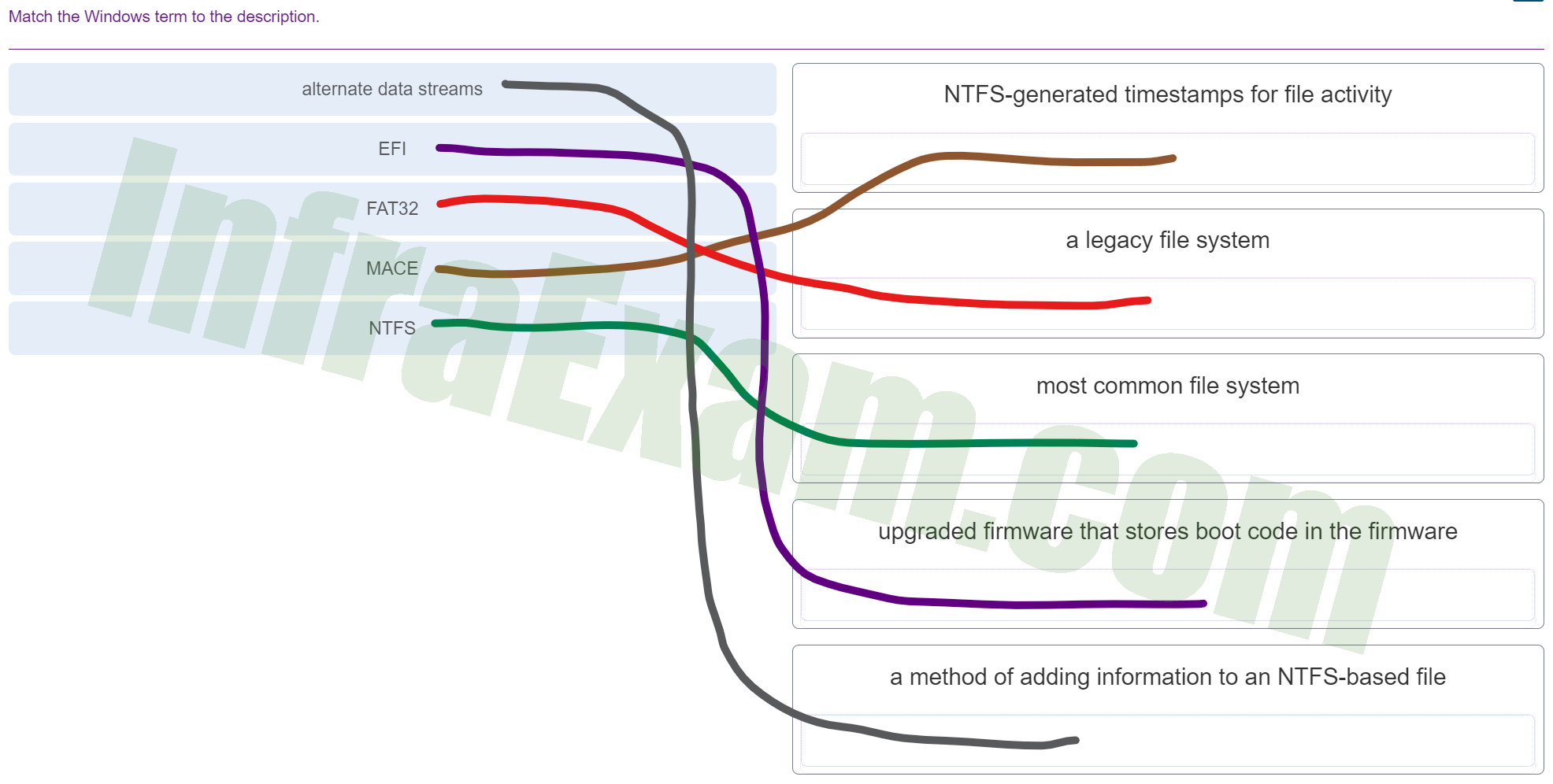|
Explanation & Hint:
- Alternate Data Streams (ADS): This is a feature of the NTFS file system that allows more than one data stream to be associated with a filename, which is a method of adding information to an NTFS-based file without affecting the main file stream.
- EFI (Extensible Firmware Interface): This is a specification that defines a software interface between an operating system and platform firmware. EFI is the upgraded firmware that stores boot code in the firmware.
- FAT32 (File Allocation Table 32): This is a legacy file system that was popular for its simplicity and compatibility with a wide array of operating systems and devices.
- MACE (Modification, Access, Creation, Entry): These are NTFS-generated timestamps for file activity. Each file or directory is tagged with the time when it was last modified (M), accessed (A), created (C), and when the entry to the file was changed (E).
- NTFS (New Technology File System): This is the most common file system used by Windows operating systems today. It has several improvements over previous file systems, such as support for metadata, advanced data structures to improve performance, reliability, and disk space utilization, as well as additional extensions, such as security access control lists (ACL) and file system journaling.
|
